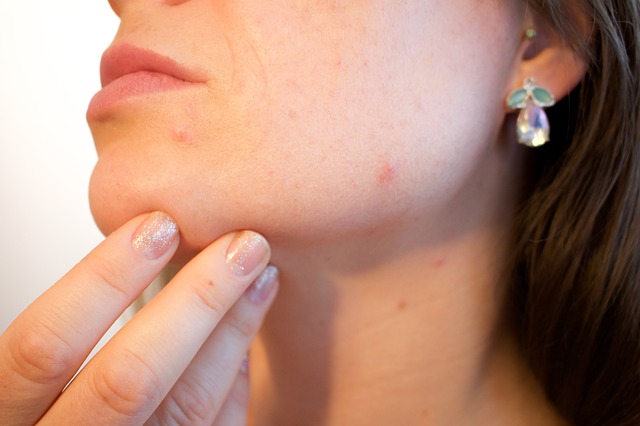Folliculitis in People with Dry Skin: Causes and Care
For beauty professionals, grasping the intricacies of various skin conditions is vital. One such condition that often remains overlooked or misinterpreted is folliculitis, especially among those with dry skin. Characterized by inflamed hair follicles, this condition can cause discomfort and be unsightly. It's crucial for beauty experts to distinguish between ordinary skin irritations and folliculitis, particularly when it appears in clients who already have dry skin.
Folliculitis, while common, can be particularly challenging to manage in conjunction with dry skin. The lack of moisture can worsen the condition, leading to heightened discomfort and potential complications. Therefore, understanding the causes, symptoms, and available treatment options is essential for any beauty professional keen on delivering thorough skincare advice. For a more detailed exploration, the National Center for Biotechnology Information provides a comprehensive overview of folliculitis.

What Triggers Folliculitis in Dry Skin?
The causes of folliculitis can differ, but specific triggers need to be addressed for individuals with dry skin. One significant factor is friction from clothing, particularly when it rubs against already fragile and dry skin. Moreover, the use of inappropriate skincare products can exacerbate the issue. Many beauty items contain harsh chemicals and fragrances that strip the skin of its natural oils, leading to increased dryness and irritation, which can trigger folliculitis.
Additionally, environmental factors like cold weather and low humidity can heighten dryness, making skin more vulnerable to conditions like folliculitis. Beauticians must recommend products that not only hydrate but also protect the skin barrier to minimize the risk of folliculitis. For more on these causes and potential solutions, check out the exfoliation tips.
Recognizing Symptoms in Clients
It's essential for beauty professionals to accurately identify the symptoms of folliculitis in clients with dry skin. Typical signs include clusters of small red bumps or white-headed pimples around hair follicles, which might be itchy, painful, or pus-filled. In cases of dry skin, these symptoms might also come with flaking or scaling, which can make the skin appear even more irritated.
Being able to recognize these symptoms enables beauticians to guide their clients effectively, ensuring they receive suitable care or referrals to dermatologists when necessary. Awareness and timely detection can prevent the condition from worsening, helping to maintain skin health and appearance.
Effective Treatment Approaches
Addressing folliculitis in clients with dry skin involves achieving a delicate balance. The aim is to soothe inflammation while concurrently tackling the underlying dryness. Beauty professionals should advocate for gentle, hydrating cleansers and moisturizers that are free from fragrances and harsh chemicals. Products rich in ceramides and hyaluronic acid can support the restoration of the skin's protective barrier.
In more severe cases, it may be necessary to recommend a dermatologist who can prescribe medicated creams or antibiotics. Moreover, educating clients on the importance of refraining from picking or scratching the inflamed areas is critical, as this can lead to further irritation or infection. Helpful tips and treatment options can also be found on the Healthline website, which provides extensive guidance on managing folliculitis.
Preventative Techniques for Long-Term Skin Health
Taking proactive steps to prevent folliculitis is especially beneficial for those with dry skin. Beauty professionals should encourage clients to wear loose-fitting clothing to reduce friction, as well as to avoid sharing personal items like towels and razors, which may facilitate the spread of bacteria.
Promoting a skincare routine that emphasizes hydration and gentle exfoliation can also contribute to overall skin health, making it less susceptible to folliculitis. It's crucial to educate clients about the necessity of maintaining their skin's moisture, particularly during harsh weather conditions. Learn more about managing sweat to prevent folliculitis by visiting this link.
Conclusion
For beauty professionals, recognizing and addressing folliculitis in individuals with dry skin is an integral aspect of offering well-rounded skincare advice. By being aware of the causes, symptoms, and treatment options, beauty specialists can provide better service to their clients, ensuring that their skin remains healthy and radiant. For thorough information on treating and preventing folliculitis, the Medscape site serves as an excellent resource.

FAQ
Q1: Can folliculitis be completely cured?
A1: Folliculitis can be effectively managed and treated, especially with appropriate skincare practices and professional advice. However, complete eradication often depends on the underlying cause, and chronic cases may need continuous management.
Q2: Which products should be avoided?
A2: Yes, those with folliculitis and dry skin should steer clear of products containing alcohol, fragrances, and harsh chemicals, as these can worsen dryness and irritation. Instead, look for gentle, hydrating formulations.
Q3: How can I assist my clients in preventing folliculitis?
A3: Educate them on maintaining a proper skincare routine that includes gentle and hydrating products, wearing loose clothing, and refraining from sharing personal items to limit bacterial spread.

